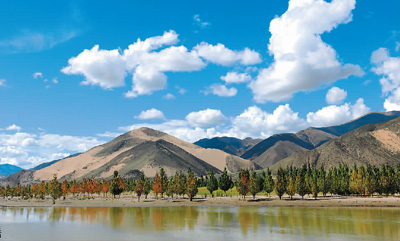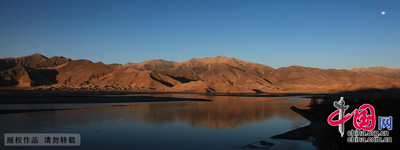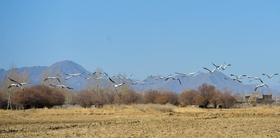Remedial work takes root along Yangtze
Every morning at 8, a machete and a portable speaker in hand, Yu Yangsen and two colleagues leave their work station on foot to inspect a forest farm alongside the Yangtze River.
Yu, the deputy chief of the seven-person station, has worked as a forest ranger for 22 years after inheriting the job from his father. When spring comes and the air dries, the rangers are on high alert for any signs of wildfire.
Workers at the Chongqing Yunyang Yangtze River Shelter-Forest Farm, established in 1964, have planted more than 6,000 hectares of trees along 42 kilometers of riverbank to restore the ecological system on the Yangtze's upper reaches.
The farm, which has 33 rangers at seven stations — each in charge of 200 hectares of forest — is the largest of its kind along the river.
The world's third-longest river, the Yangtze runs for 6,300 kilometers from the glaciers of the Qinghai-Tibet Plateau eastward through Chongqing, Wuhan and Nanjing before reaching the East China Sea at Shanghai.
The farm is known as the Leader Farm by the area's residents, as the late Chairman Mao Zedong gave the order to plant more trees there in 1958.
President Xi Jinping attached great importance to restoring the river's ecology. At a meeting earlier this year in Chongqing, he urged officials from provinces along the river to concentrate on ecological restoration and protection, and to avoid large-scale development.
More than 400 million people get their drinking water from the Yangtze, and water security has become a major issue in China's development. However, between 30 billion and 40 billion metric tons of sewage annually is discharged from petrochemical plants on the Yangtze, accounting for more than one-third of the nation's annual discharge.
Excessive deforestation means the foliage coverage rate on the river's upper reaches dropped from 30 percent in the 1950s to only 20 percent in the 1990s, according to the Chongqing Bureau of Forestry. The area of soil erosion increased from 360,0000 square km in the 1950s to 560,0000 square km in the 1980s.
With the river's ecosystem on the verge of collapse, a campaign was launched to protect it. Beijing also drafted a landmark program, to be launched this year, to restore the river's ecosystem.
Yunyang county, 310 km east of Chongqing, has been a vital ecological barrier on the upper reaches of the Yangtze, especially in the Three Gorges Reservoir area.
In 1959, soon after Mao's order to plant more trees, thousands of farmers joined a voluntary tree-planting project. But a lack of scientific guidance meant most of the trees died.
In 1964, the Chongqing forest farm was created to carry out professional forestry work, but funding was insufficient and the rangers were seldom paid.
Manager Sun Ye said: "The rangers used to live in caves and ate only sweet potatoes. They had to plant mushrooms in the forest and took these home as their salary. The early days were really tough."
In 2009, Chongqing launched the Yangtze River Ecological Barrier Construction Project, with Yunyang county one of four pilot areas.
With increased investment, the rangers' working conditions improved. In Yunyang county, the forest coverage rate on the river's banks has reached 70 percent, according to Peng Ming, deputy director of the Yunyang Bureau of Forestry.
Your Comment
Name E-mailRelated News
-
;
-
-

-
Tibet’s Yarlung Zangbo River ecology demonstration area
Starting in 2014, the Tibet Autonomous Region commenced a greenification project for the “Two Rivers & Four Rivers” .
-
-
-

-
Amazing scenery of Yarlung Zangbo River
Stretching for more than 2,900 kilometers and as the river at the highest altitude in the world, the Yarlung Zangbo River is located in Tibet.
-
-
-

-
Black-necked cranes seen along Yarlung Zangbo River
A group of black-necked cranes walk along a bank of the Yarlung Zangbo River in Tibet autonomous region, Nov 22, 2015.
-
Based in Lhasa, Tibet Vista is a Tibet travel agency that specialized in Tibet permit, and Tibet tours for both private and group travelers at a local price!
•4 Days Lhasa City Group Tour from USD 460 •8 Days Everest Base Camp Group Tour from USD 850 •15 Days Mt.Kailash Group Tour from USD 1780 •2016 Tibet Train Tours from Beijing, Shanghai, Chengdu, Xining,etc










